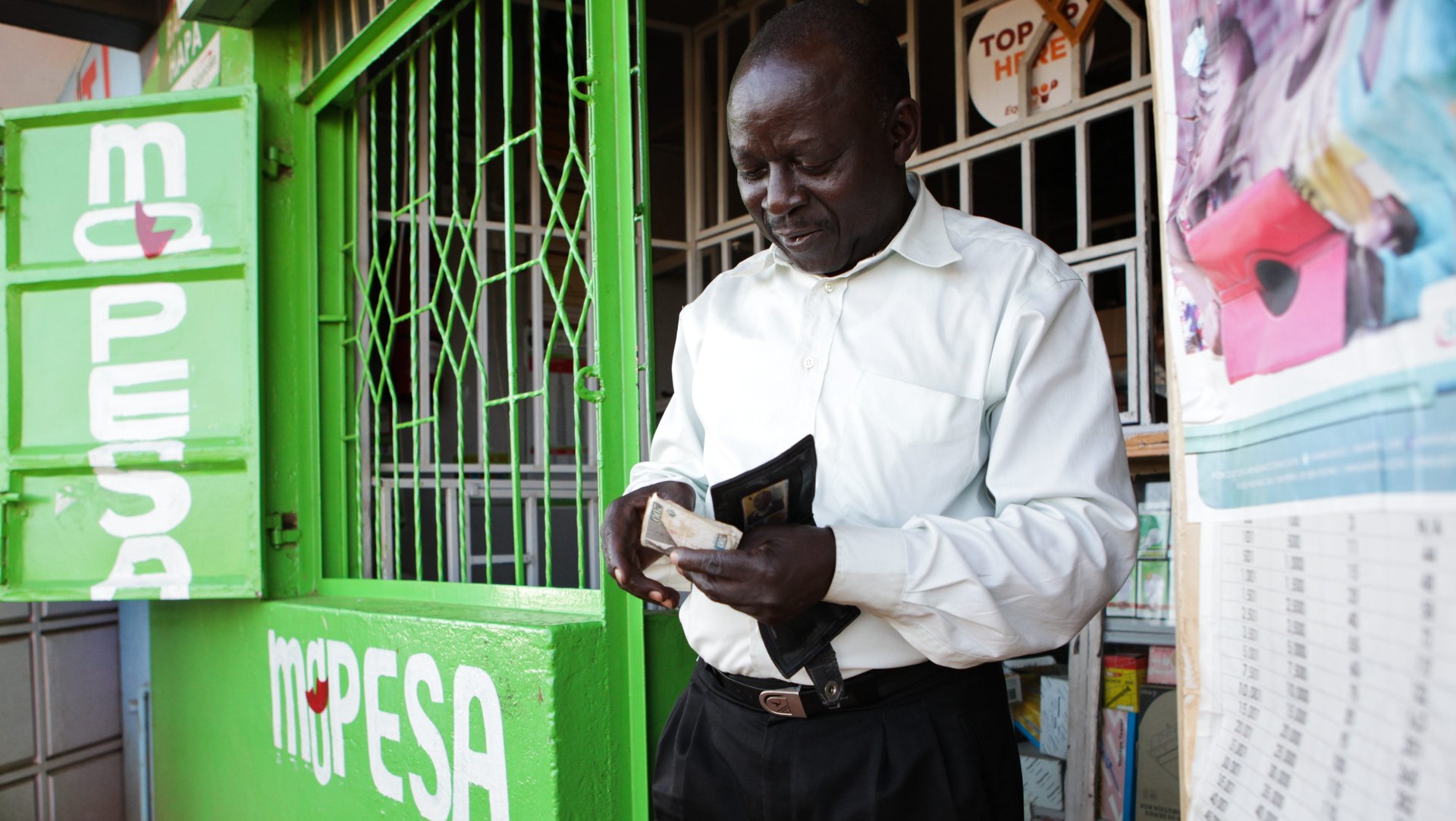Africa’s early mobile money success is finally set to go global
M-Pesa, the mobile money system that is the pride and anchor of Kenya’s homegrown technology community, has had plenty of hype and excitement since its 2007 launch.


M-Pesa, the mobile money system that is the pride and anchor of Kenya’s homegrown technology community, has had plenty of hype and excitement since its 2007 launch.
The service, developed by Kenya’s largest phone operator Safaricom, enables almost 30 million people to pay for everyday goods and services, access loans, and send money all over the world. Around $28 billion flowed through it in 2015, equivalent to around 44% of Kenya’s GDP that year. The service has spread to 10 countries, including Albania, Egypt, Romania, Lesotho, and Tanzania. Its success at the forefront of the disruption of cash usage has helped support a local technology startup scene in Kenya and attracted international partners, making Nairobi one of Africa’s leading tech hubs.
But two recent developments key to M-Pesa’s future, and to the future of mobile money in general, have gone under the radar.
The first is that Kenya’s regulators have convinced local mobile money competitors to enable interoperability. That means, for example, that for the first time Safaricom customers will be able to use M-Pesa to send money to an Airtel Money customer. Safaricom already has around 70% mobile market share in Kenya so this might have little impact on the local market for the foreseeable future as many Kenyans have already joined Safaricom to be able to send money to each other. But enabling interoperability will mean it is open to more competitive forces even from its current dominant market position.
The second is UK’s Vodafone Group announcement last week that it had transferred a 35% stake in Safaricom to its South African subsidiary, Vodacom, in a $2.6 billion deal. This suggests that Safaricom will be able to focus more on a pan-African strategy, particularly through its M-Pesa crown jewel. M-Pesa is the fastest growing revenue generator for Safaricom, as traditional services like voice and SMS slow or shrink.
Vodacom has tried unsuccessfully in the past to introduce M-Pesa to South Africa, but the more advanced banking sector made the prospect of mobile money less attractive than in Kenya and Tanzania. Still, there are many other promising African markets M-Pesa has yet to tap, which will now be easier to navigate in closer partnership with Safaricom.
If other African regulators follow Kenyan regulators’ lead and allow inexpensive cross-company and cross-border transactions between Africa’s leading mobile networks, including MTN Mobile Money, Orange Money, and Airtel Money, local banking and the international remittances market could be completely transformed by M-Pesa.
The hype about M-Pesa has been great, but even Safaricom’s own chief executive Bob Collymore has described its technology as “clumsy”. This could all change on a continent-wide scale—and not just for M-Pesa.
It will take time—years, not months—but interoperability, pan-African competition, and open markets will drive several African tech sectors and local companies to take a sustainable global lead in mobile money.